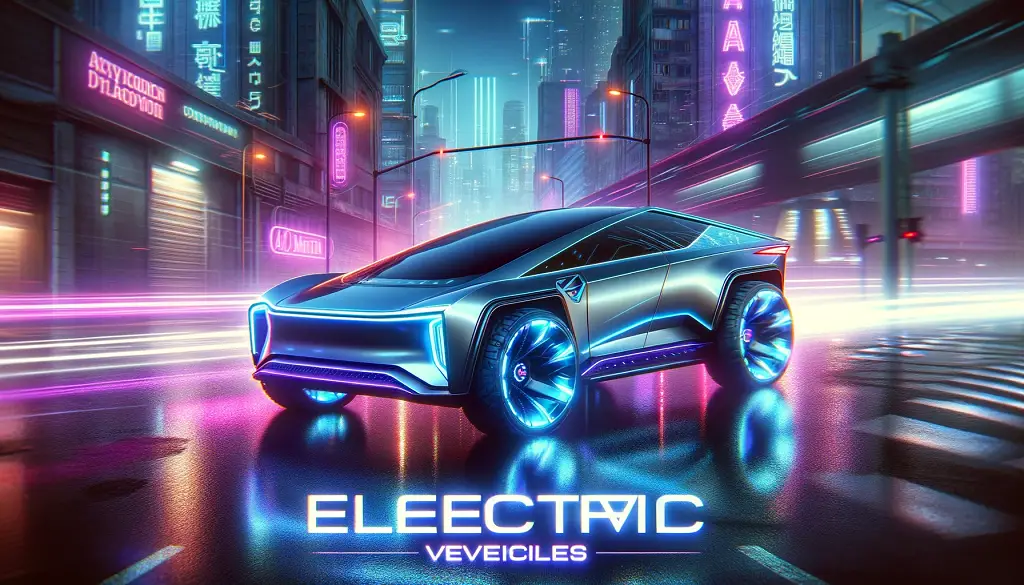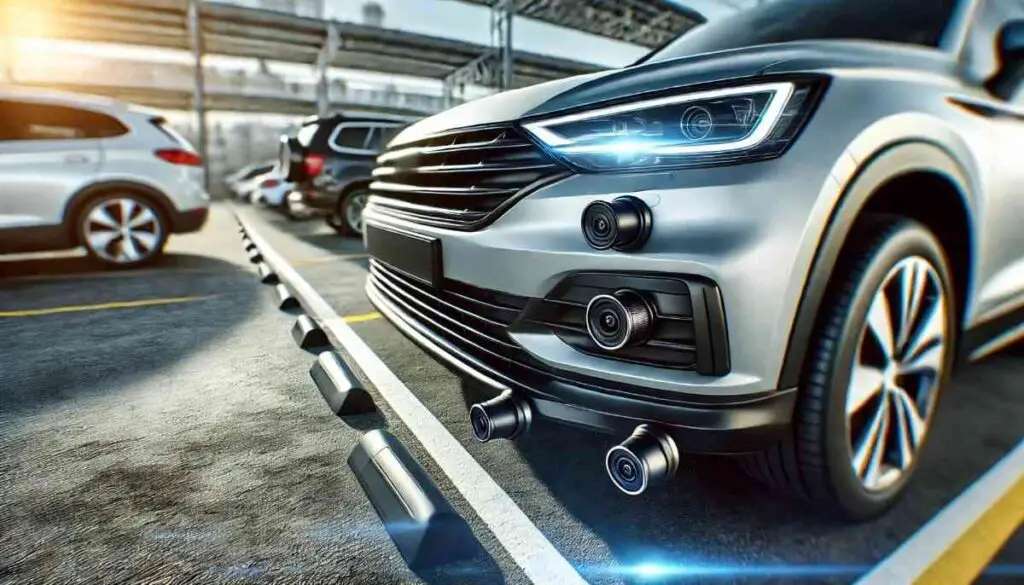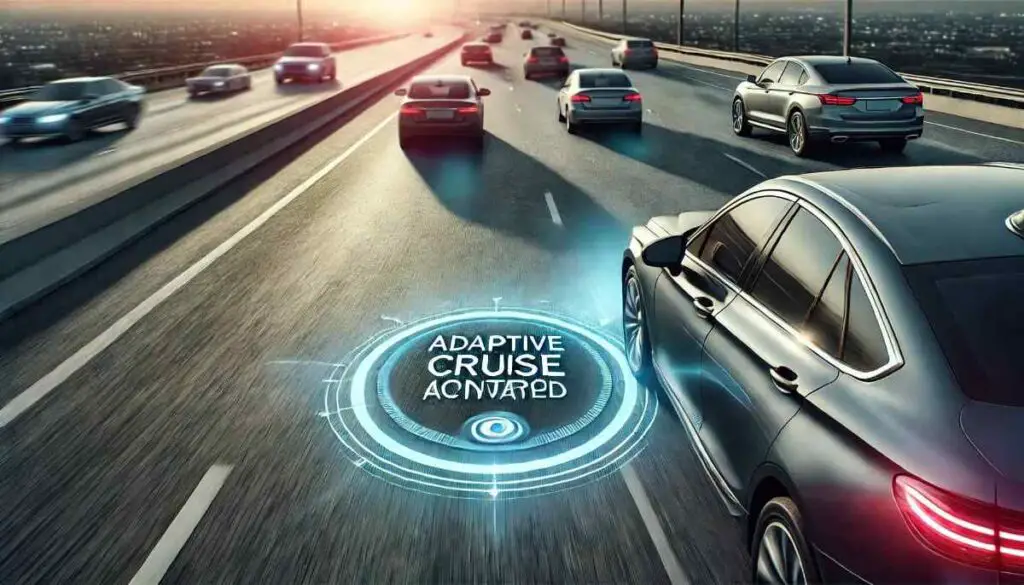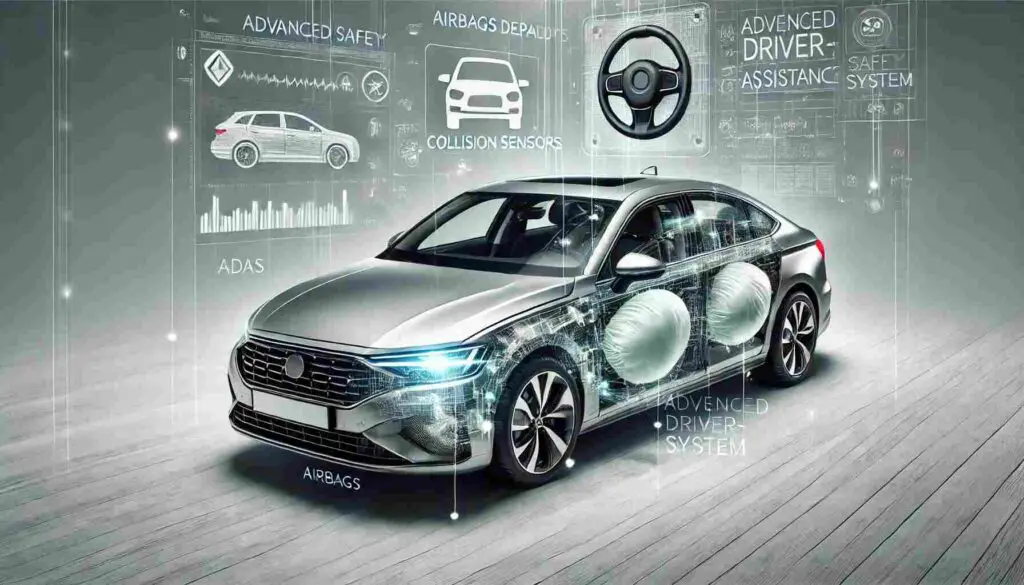In the ever-evolving world of automotive technology, Electric All-Wheel Drive (AWD) vehicles have emerged as a remarkable and transformative innovation. These vehicles represent the intersection of sustainability, performance, and versatility, catering to the needs and aspirations of modern consumers. In this comprehensive guide, we delve into the mechanics, benefits, popular models, consumer considerations, the future of electric AWD, and help you make an informed choice in the world of electrified mobility.
Section 1: The Mechanics of Electric AWD
How Electric AWD Works
Electric AWD operates on the fundamental principle of supplying power to all four wheels independently. This design significantly enhances traction and control, especially in challenging driving conditions. The key differentiator from traditional AWD systems lies in the method of power distribution.
Traditional AWD systems typically rely on mechanical linkages, such as a center differential and driveshaft, to transmit power to all wheels. While effective, these mechanical connections can introduce some delays in power distribution.
In contrast, electric AWD systems leverage advanced electronic controls. Here’s how it works:
- Individual Wheel Control: Electric AWD vehicles are equipped with an electric motor at each wheel or axle. These motors can operate independently, allowing precise control over each wheel’s power output.
- Instant Response: When a wheel experiences slip or loss of traction, the electronic control system can instantly adjust the power delivered to that specific wheel. This rapid response enhances stability and control, making it particularly valuable in slippery or uneven terrain.
- Optimized Traction: The system continuously monitors factors like wheel speed, road conditions, and driver inputs. It then optimizes power distribution to provide the best possible traction and handling.
Basic Principles
The basic principles of electric AWD revolve around the use of individual electric motors at each wheel or axle. Here’s a closer look:
- Electric Motors: In an electric AWD setup, there are electric motors at both the front and rear axles or even at each wheel. These motors generate the power needed to drive the vehicle.
- Precise Power Distribution: With a motor at each wheel, power distribution can be highly precise. For example, if a wheel on the left side loses traction, power can be increased to the wheels on the right side to compensate. This level of control enhances stability and handling.
- Adaptability: Electric AWD systems are adaptive. They can adjust power distribution on the fly, depending on factors like road conditions, speed, and driver input. This adaptability ensures optimal performance at all times.
Differences from Traditional AWD Systems
Electric AWD systems differ significantly from traditional AWD in several key aspects:
- Quicker Response Times: As mentioned earlier, electric AWD offers near-instantaneous adjustments to power distribution. Traditional AWD systems may have mechanical delays due to the physical linkages involved.
- Greater Efficiency: Electric AWD is often more energy-efficient because it only delivers power to the wheels that need it. Traditional AWD systems may constantly distribute power to all wheels, even when it’s not required.
- No Mechanical Connections: In traditional AWD systems, mechanical linkages like driveshafts and differentials connect the wheels. In electric AWD, there are no such physical connections between wheels, reducing the risk of mechanical failure.
Technology Behind Electric AWD
Battery Technology
The cornerstone of any electric vehicle, including those with AWD, is the battery technology. Electric AWD vehicles typically employ advanced lithium-ion batteries. Here’s a closer look at battery technology:
- Lithium-Ion: These batteries are favored for their high energy density, allowing them to store a significant amount of energy in a relatively compact and lightweight package.
- Efficiency: Lithium-ion batteries are highly efficient, converting stored energy into power with minimal losses. This efficiency contributes to consistent and reliable power delivery in electric AWD vehicles.
Motor Placement and Control
Strategic motor placement and intelligent control systems are essential components of electric AWD technology. Here’s how they work:
- Optimal Weight Distribution: Electric AWD vehicles are designed with motors placed at positions that optimize weight distribution. This balanced weight distribution enhances stability and traction, improving overall performance.
- Intelligent Control: Advanced control systems constantly monitor the vehicle’s dynamics, including wheel speeds, driver inputs, and road conditions. These systems adjust power delivery to each motor in real-time, ensuring precise control and optimal traction.
Section 2: Benefits of Electric AWD Vehicles
Enhanced Performance and Handling
Electric AWD vehicles redefine the driving experience, setting new standards for performance and handling. Here’s how:
- Instant Torque Delivery: Electric motors generate maximum torque from standstill, resulting in rapid acceleration. This instant torque delivery provides a thrilling driving experience, allowing electric AWD vehicles to go from 0 to 60 mph in a matter of seconds.
- Precise Wheel Control: With individual electric motors at each wheel, electric AWD offers precise control over power distribution. This means that each wheel can receive the exact amount of power needed, enhancing cornering, maneuverability, and overall handling.
Acceleration and Torque Distribution
Electric AWD excels in delivering power to the wheels with the most traction, leading to impressive benefits:
- Outstanding Acceleration: Electric AWD vehicles can distribute power to the wheels that have the best grip, ensuring optimal traction. This results in swift acceleration, even in adverse weather conditions or on challenging road surfaces.
- Improved Control: The ability to vary torque distribution among the wheels allows for better control, particularly when driving in situations that demand quick adjustments, such as avoiding obstacles or navigating tight corners.
Improved Traction in Various Conditions
Electric AWD’s versatility shines through when it comes to traction:
- Stability on Slippery Roads: Whether you’re faced with rain-slicked roads or snow-covered streets, electric AWD ensures stability and grip. The system can adapt to changing road conditions by dynamically shifting power to the wheels with the most traction, reducing the risk of slipping or skidding.
- Ideal for Diverse Climates: Electric AWD is an ideal choice for drivers in regions with diverse climates. From sunny days to rainy seasons and winter storms, these vehicles provide reliable traction and control, enhancing driver confidence.
Wet, Snowy, and Off-Road Performance
Electric AWD’s ability to transfer power to wheels with traction extends its capabilities to off-road adventures:
- Off-Road Capability: Electric AWD vehicles are not limited to paved roads. Their ability to distribute power effectively to all wheels makes them capable performers when venturing off-road. This adaptability opens up new possibilities for exploration and adventure.
- Snowy Conditions: In snowy terrain, electric AWD shines. By directing power to the wheels with grip, these vehicles maintain stability and control, making winter driving safer and more enjoyable.
Increased Safety and Stability
The added traction and stability of electric AWD contribute significantly to safer driving experiences:
- Reduced Accident Risk: The improved traction and stability offered by electric AWD reduce the risk of accidents, especially in adverse conditions. Drivers can maintain control and stability even when faced with unexpected obstacles or sudden maneuvers.
Environmental Impact and Efficiency
Beyond performance and safety, electric AWD vehicles are inherently eco-friendly:
- Zero Tailpipe Emissions: Electric AWD vehicles produce zero tailpipe emissions, contributing to a cleaner and healthier environment. This eco-friendly aspect aligns with the global push for reducing greenhouse gas emissions.
- Efficiency: Electric AWD systems are highly efficient, thanks to their precise power distribution and regenerative braking technology. This efficiency conserves energy and extends the vehicle’s range, reducing the overall carbon footprint associated with transportation.
In summary, Electric All-Wheel Drive vehicles offer a holistic package of benefits, combining exhilarating performance, enhanced safety, and environmental sustainability. With their instant torque delivery, precise wheel control, and adaptability to various driving conditions, electric AWD vehicles are reshaping the way we drive while minimizing our impact on the planet.
Section 3: Popular Electric AWD Models
Electric AWD technology has found its way into a range of vehicle types, catering to various preferences and needs. Here are some popular models:
Sedans
- Tesla Model 3:
- Sleek Design: The Tesla Model 3 is renowned for its sleek and minimalist design, setting new standards in the electric sedan segment. Its clean lines and aerodynamic profile contribute to both aesthetics and efficiency.
- Cutting-Edge Technology: Tesla’s Model 3 features cutting-edge technology, including the highly acclaimed Autopilot system and a large, user-friendly touchscreen interface. It offers an impressive range and performance, making it a top choice among electric sedan enthusiasts.
- BMW i4:
- Luxury Meets Performance: The BMW i4 combines the luxury and craftsmanship associated with the BMW brand with electric performance. It offers a stylish exterior and a premium interior, ensuring a comfortable and sophisticated driving experience.
- Electric Power: The i4 boasts powerful electric motors that deliver exhilarating acceleration and exceptional handling. It caters to those seeking both luxury and eco-friendliness.
- Audi e-tron GT:
- Stylish and High-Performance: Audi’s e-tron GT is a striking electric sedan that effortlessly blends style with high-performance capabilities. Its aggressive design and sporty demeanor make a bold statement on the road.
- Quattro AWD: The e-tron GT features Audi’s renowned Quattro AWD system, providing exceptional traction and control. It’s a prime example of electric AWD technology enhancing both performance and handling.
SUVs
- Ford Mustang Mach-E:
- Iconic Style: The Ford Mustang Mach-E carries the legacy of the Mustang brand into the electric SUV realm. It retains the iconic Mustang design elements while introducing a new era of electric mobility.
- Electric Power: With a focus on performance, the Mach-E offers powerful electric motors and precise AWD control. It’s a versatile choice for those who appreciate style and exhilaration.
- Kia EV6:
- Versatile and Practical: The Kia EV6 is a versatile electric SUV designed to meet the practical needs of families and daily commuters. It offers ample interior space and a range of tech features.
- Electric Efficiency: With its electric AWD system, the EV6 excels in efficiency and traction. It’s an excellent option for those seeking a practical yet eco-friendly SUV.
Trucks
- Rivian R1T:
- Redefining Electric Trucks: The Rivian R1T is a groundbreaking electric truck that combines rugged capability with sustainability. It offers off-road prowess and a range suitable for long adventures.
- Adventure-Ready: With AWD capabilities, the R1T is ready for off-road excursions, making it an ideal choice for adventurers and outdoor enthusiasts.
- Ford F-150 Lightning:
- Legendary F-150 Meets Electric Power: The Ford F-150 Lightning brings the legendary F-150 into the electric era. It retains the F-150’s workhorse capabilities while embracing electric efficiency and power.
- Practical AWD: The AWD system in the F-150 Lightning enhances traction and control, making it suitable for various work and lifestyle needs.
Luxury Models
- Porsche Taycan:
- Sports Car Performance and Luxury: Porsche’s Taycan is a testament to sports car performance and luxury in the electric segment. It offers a combination of power, handling, and sophistication.
- Precise AWD: The Taycan features precise AWD technology that enhances its cornering abilities and stability, delivering a true Porsche driving experience.
- Mercedes-Benz EQS:
- Setting New Standards: The Mercedes-Benz EQS sets new standards in electric luxury. It combines advanced technology, opulent interiors, and a serene driving experience.
- Elevated AWD: The EQS employs sophisticated AWD technology to ensure a smooth and comfortable ride, even in challenging road conditions.
These popular electric AWD models represent the diverse range of options available to consumers, catering to various preferences, lifestyles, and performance requirements. Whether you prioritize style, luxury, efficiency, or adventure, there’s an electric AWD vehicle to suit your needs.
Section 4: Consumer Considerations
When considering an electric AWD vehicle, several factors should influence your decision:
Range and Efficiency
- Competitive Ranges: Electric AWD vehicles typically offer competitive ranges, allowing you to travel substantial distances on a single charge. It’s crucial to assess whether the vehicle’s range aligns with your daily driving needs and long-distance travel requirements.
- Efficiency: Electric AWD vehicles are known for their efficiency, as they optimize power distribution to wheels for improved traction. This efficiency not only reduces energy consumption but also extends the range between charges. Consider how the vehicle’s efficiency impacts your daily commute and overall driving habits.
Impact of AWD on Battery Life
- Battery Optimization: While AWD systems can have some impact on efficiency, modern electric AWD systems are designed to minimize this effect on battery life. It’s essential to research how a specific electric AWD model manages power distribution and whether it has advanced battery management systems to preserve the battery’s longevity.
Pricing and Affordability
- Initial Cost: Electric AWD vehicles come in various price ranges, so it’s important to evaluate your budget and determine how much you’re willing to invest upfront. Keep in mind that while electric vehicles may have a higher initial cost than traditional vehicles, you can potentially offset this expense over time.
- Incentives and Savings: Explore available incentives, tax credits, and rebates for electric vehicles in your region. Additionally, consider the long-term savings associated with lower fuel costs and reduced maintenance expenses. Electric AWD vehicles often have fewer moving parts, leading to decreased maintenance costs over the vehicle’s lifespan.
Charging Infrastructure
- Availability of Charging Stations: Assess the availability of charging stations in your area and along your regular routes. A robust charging infrastructure ensures convenience and peace of mind when it comes to recharging your electric AWD vehicle.
Home and Public Charging Options
- Home Charging Setup: Evaluate your home charging setup, as the convenience of overnight charging can be a significant advantage. Ensure that your home’s electrical system can support the charging requirements of your chosen electric AWD vehicle. Consider installing a Level 2 home charging station for faster charging speeds.
- Public Charging Networks: Familiarize yourself with public charging networks and their locations. This is especially important if you plan to take longer trips or rely on public charging for your daily charging needs. Explore membership options or apps that provide access to a wide range of charging stations.
Maintenance and Longevity
- Lower Maintenance Costs: Electric AWD vehicles have fewer moving parts compared to traditional internal combustion engine vehicles. This translates to lower maintenance costs over time. Consider the potential savings on routine maintenance tasks like oil changes and exhaust system repairs.
- Longer Lifespan: Electric vehicles are known for their longevity due to the durability of electric motors and fewer mechanical components subject to wear and tear. Factor in the expected lifespan of the vehicle when evaluating its overall cost of ownership.
In conclusion, when contemplating the purchase of an electric AWD vehicle, take into account range, efficiency, pricing, charging infrastructure, and maintenance considerations. By carefully assessing these factors, you can make a well-informed decision that aligns with your lifestyle, budget, and environmental priorities.
Section 5: The Future of Electric AWD
Upcoming Models and Innovations
- Ongoing Technological Advancements: Electric AWD technology is continually evolving, with automakers investing in research and development to push the boundaries of performance and efficiency. Expect to see innovations that enhance power distribution algorithms, battery technology, and electric motor efficiency.
- Increased Range: Future electric AWD models are likely to offer even greater ranges, thanks to advancements in battery energy density and management. This will alleviate range anxiety and make electric AWD vehicles more appealing to a broader range of consumers.
- Enhanced Performance: Automakers are harnessing the full potential of electric motors to deliver blistering acceleration and handling capabilities. Electric AWD models of the future may offer unprecedented levels of performance, rivaling or even surpassing traditional high-performance vehicles.
- Improved Charging Infrastructure: As electric AWD vehicles become more prevalent, the charging infrastructure is expected to expand rapidly. Faster-charging technologies and increased charging station accessibility will further bolster the appeal of electric AWD.
- Integration of AI and Connectivity: Expect to see increased integration of artificial intelligence (AI) and advanced connectivity features in electric AWD vehicles. AI-driven systems will optimize power distribution in real-time, improving traction and handling across various driving conditions.
Market Trends and Consumer Demand
- Environmental Awareness: The global shift towards environmental consciousness is a dominant trend in the automotive industry. Consumers are increasingly choosing electric AWD vehicles due to their lower carbon footprint and reduced reliance on fossil fuels.
- Performance Expectations: Modern consumers no longer associate electric vehicles solely with environmental benefits. They now demand electric AWD vehicles that deliver exhilarating performance and precision handling. This shift in consumer expectations is driving automakers to focus on both sustainability and sportiness.
- Versatility and Practicality: Electric AWD vehicles are gaining popularity among families and adventure enthusiasts. The ability to handle diverse terrains and challenging weather conditions makes them attractive choices for those seeking versatility and practicality in their vehicles.
Regulatory Impacts and Incentives
- Government Policies: Governments around the world are enacting policies aimed at reducing carbon emissions and promoting the adoption of electric vehicles. These policies include stricter emission standards and incentives for electric vehicle manufacturers.
- Incentives and Rebates: Many regions offer incentives, tax credits, and rebates to consumers who purchase electric AWD vehicles. These financial incentives help reduce the upfront cost of ownership, making electric AWD more accessible to a broader range of consumers.
- Charging Infrastructure Investments: Governments are investing in the expansion of charging infrastructure to support the growing electric vehicle market. This includes funding for public charging stations, research into fast-charging technologies, and incentives for businesses and homeowners to install charging equipment.
In conclusion, the future of electric AWD vehicles is characterized by continuous innovation, a growing market driven by environmental awareness and performance expectations, and supportive government policies and incentives. As the automotive industry evolves, electric AWD technology will play a pivotal role in shaping the future of mobility.
Section 6: Making the Choice
Personal Needs and Lifestyle Fit
- Daily Commute and Driving Habits: Evaluate your daily commute and driving habits. Consider the typical distance you travel in a day and whether it falls within the range offered by the electric AWD vehicle you’re interested in. Additionally, think about the types of terrain and weather conditions you encounter regularly. AWD can be particularly beneficial in areas with frequent rain, snow, or rough terrain.
- Lifestyle Considerations: Take into account your lifestyle and how an electric AWD vehicle fits into it. If you have an active lifestyle that involves outdoor activities or road trips, the versatility of an AWD system can be advantageous. Families may also appreciate the added traction and stability provided by AWD, especially when transporting loved ones.
Total Cost of Ownership
- Purchase Price: Consider the initial purchase price of the electric AWD vehicle you’re interested in. While electric vehicles may have a higher upfront cost compared to traditional vehicles, keep in mind that there are often government incentives, tax credits, and rebates available to reduce this cost.
- Charging Costs: Assess the cost of charging your electric AWD vehicle. This involves understanding your local electricity rates and estimating how much you’ll spend on charging at home or using public charging stations. Electric AWD vehicles are generally more cost-effective to operate than traditional gasoline-powered vehicles due to lower fuel costs.
- Potential Savings: Calculate potential savings over time. Electric AWD vehicles often have lower maintenance costs because they have fewer moving parts, require less frequent maintenance, and don’t need oil changes. Additionally, you’ll save on gasoline expenses and benefit from potential tax incentives, which can further reduce the total cost of ownership.
Resale Value and Depreciation
- Resale Value: Electric AWD vehicles tend to retain their value well in the resale market. This means that when you decide to sell or trade in your vehicle in the future, you may receive a higher resale value compared to some traditional vehicles. Factors contributing to this strong resale value include increasing demand for electric vehicles and the perception of sustainability.
- Depreciation: While all vehicles experience depreciation to some extent, electric AWD vehicles typically depreciate at a slower rate than their gasoline counterparts. This is partly due to the increasing popularity of electric vehicles and the evolving perception of them as valuable assets.
In summary, making the choice to invest in an electric AWD vehicle requires a thoughtful evaluation of your daily needs, budget considerations, and the long-term benefits of ownership. By taking into account factors like your driving habits, the total cost of ownership, and the potential for strong resale value, you can make an informed decision that aligns with your lifestyle and priorities.
FAQ Section
How does electric AWD differ from traditional AWD?
Electric AWD and traditional AWD systems differ in their method of power distribution:
- Electric AWD: Electric AWD relies on electric motors at each wheel or axle to independently distribute power. It uses advanced electronic controls to optimize traction and handling.
- Traditional AWD: Traditional AWD systems employ mechanical linkages, such as driveshafts and differentials, to distribute power to all wheels. These systems are mechanically linked, which can introduce some delays in power distribution compared to electric AWD.
What are the long-term benefits of owning an electric AWD vehicle?
Owning an electric AWD vehicle offers several long-term benefits:
- Lower Operating Costs: Electric AWD vehicles generally have lower operating costs due to reduced maintenance requirements (fewer moving parts), lower fuel costs (electricity is often cheaper than gasoline), and potential tax incentives or rebates.
- Reduced Environmental Impact: Electric AWD vehicles produce zero tailpipe emissions, contributing to reduced air pollution and a lower carbon footprint. They play a role in environmental sustainability.
- Potentially Higher Resale Value: Electric AWD vehicles tend to retain their value well, which can result in a higher resale value compared to some traditional vehicles. Increasing demand for electric vehicles and their perceived long-term value contribute to this trend.
Can electric AWD vehicles handle extreme weather conditions?
Yes, electric AWD vehicles are well-suited for extreme weather conditions, including snow and ice. Their AWD systems excel at providing superior traction by distributing power to wheels with the most grip. This enhances stability and control, making them capable performers in challenging weather conditions.
What are the maintenance requirements for electric AWD vehicles?
Maintenance for electric AWD vehicles is generally minimal. Some key points include:
- Fewer Components: Electric AWD vehicles have fewer moving parts compared to traditional internal combustion engine vehicles, reducing the need for regular maintenance.
- No Oil Changes: Electric vehicles don’t require oil changes, which is a common maintenance task for traditional vehicles.
- Regenerative Braking: Regenerative braking systems help extend the life of brake pads and reduce brake maintenance.
Routine maintenance for electric AWD vehicles may include tire rotations, brake inspections, and periodic checks of the battery and electric motor systems.
How does the range of electric AWD vehicles compare to regular electric cars?
The range of electric AWD vehicles varies by model, but they typically offer competitive ranges comparable to regular electric cars. Advances in battery technology and efficient power distribution systems have allowed electric AWD vehicles to maintain impressive ranges, making them suitable for a wide range of driving needs, including daily commutes and long-distance travel.
Conclusion
In summary, electric AWD vehicles represent a remarkable convergence of innovation and sustainability, offering enhanced performance, safety, and environmental benefits. As the automotive industry continues its electrifying transformation, electric AWD stands at the forefront of this revolution, shaping the future of mobility.
Additional Resources
Explore the following links to gain further insights into electric AWD vehicles:
Electric AWD vs. Traditional AWD – A Detailed Comparison
The rise of electric vehicles (EVs) has brought with it a new era of all-wheel drive (AWD) technology. While traditional AWD systems rely on mechanical components to transfer power between the wheels, electric AWD utilizes electric motors to achieve the same goal. Both have their own set of advantages and disadvantages, making the choice between them a matter of considering your specific needs and preferences.
Traditional AWD:
-
Components: Employs a driveshaft, transfer case, differentials, and axles to distribute power to all four wheels.
-
Pros:
- Proven technology: Time-tested and reliable, with a wide range of systems available for different driving conditions.
- Off-road capability: Often excels in challenging terrain due to its mechanical nature.
- Lower cost: Generally less expensive than electric AWD systems.
-
Cons:
- Complexity: More moving parts to maintain and repair, potentially leading to higher costs.
- Fuel efficiency: AWD can decrease fuel economy compared to two-wheel-drive (2WD) models.
- Weight: Adds additional weight to the vehicle, impacting handling and performance.
Electric AWD:
-
Components: Uses two electric motors, one for each axle, to independently power the wheels.
-
Pros:
- Superior traction: Offers quicker and more precise power delivery, resulting in better grip and handling in slippery conditions.
- Performance: Can provide faster acceleration and sharper handling compared to traditional AWD.
- Efficiency: Electric motors are inherently more efficient than gasoline engines, potentially offsetting the energy loss from powering additional wheels.
- Smoother ride: Delivers a quieter and smoother driving experience due to the absence of a driveshaft and other mechanical components.
-
Cons:
- Range: AWD can slightly decrease EV range compared to RWD models.
- Cost: Electric AWD systems are typically more expensive than traditional AWD.
- Complexity: While having fewer moving parts than traditional AWD, electric motors and their associated electronics can still be costly to repair.
- Limited off-road capability: Some electric AWD systems are not designed for extreme off-road use.
| Feature | Traditional AWD | Electric AWD |
|---|---|---|
| Components | Driveshaft, transfer case, differentials, axles | Electric motors |
| Pros | Proven technology, off-road capability, lower cost | Superior traction, performance, efficiency, smoother ride |
| Cons | Complex, less efficient, heavier | Higher cost, slightly less range, limited off-road capability |
Consumer Reviews of Popular Electric AWD Models
Absolutely! Here’s a deeper dive into consumer reviews of popular electric AWD models, complete with visuals to help you better understand their appeal and quirks:
Tesla Model Y:
-
Praised for:
- Spacious and versatile interior, accommodating even tall passengers and large cargo.
- Impressive acceleration, effortlessly zipping to highway speeds.
- Advanced driver-assistance features like Autopilot and Full Self-Driving Capability, offering a semi-autonomous driving experience.
- Extensive Tesla Supercharger network, providing convenient and reliable charging on long journeys.
-
Common critiques:
- Pricey, especially when adding desired features like upgraded wheels or advanced audio.
- Stiff ride quality, particularly noticeable on rough roads.
- Infotainment system can be challenging to navigate, relying heavily on touchscreen controls.
- Potential build quality issues reported by some owners, including misaligned panels and interior trim imperfections.
Ford Mustang Mach-E:
-
Highlights:
- Fun and sporty driving dynamics, reminiscent of the iconic Mustang coupe.
- Unique design that stands out from the crowd, turning heads wherever you go.
- Spacious and comfortable interior, offering ample legroom and headroom for all passengers.
- Fast charging capability, allowing you to top up the battery quickly during road trips.
-
Drawbacks:
- Shorter range than some competitors, particularly in colder climates.
- Infotainment system can be buggy at times, with occasional lag and glitches.
- Some owners reported panel alignment issues and minor interior trim problems.
Kia EV6:
-
Appreciated for:
- Striking design with a futuristic and aerodynamic profile.
- Smooth and quiet ride, ensuring a relaxing and enjoyable driving experience.
- Excellent range, allowing for longer journeys without frequent charging stops.
- User-friendly infotainment system with a clear and intuitive interface.
-
Downsides:
- Cargo space not as generous as some rivals, especially when all seats are occupied.
- Acceleration not as exhilarating as the Mustang Mach-E, offering a more composed and refined driving experience.
- Some reports of charging speed inconsistencies, with slower charging times observed in certain situations.
Hyundai Ioniq 5:
-
Commended for:
- Futuristic design with a boxy silhouette and retro-inspired details.
- Spacious and versatile interior that can be easily reconfigured to accommodate various needs.
- Comfortable ride quality, ideal for long journeys and daily commutes.
- Competitive range, putting it on par with many other popular electric SUVs.
-
Less favorable points:
- Infotainment system can be laggy at times, especially when using certain features.
- Charging speed not as fast as some competitors, taking longer to top up the battery.
- Limited availability in some regions, with wait times for new orders potentially extending into months.
Volvo XC40 Recharge:
-
Positive aspects:
- Luxurious interior with high-quality materials and a minimalist Scandinavian design.
- Refined ride quality, offering excellent comfort and composure even on uneven roads.
- Impressive safety features like Pilot Assist and City Safety, providing peace of mind behind the wheel.
- Spacious cargo space for its size, making it practical for everyday use and weekend adventures.
-
Negative aspects:
- High price tag, making it one of the more expensive options in the segment.
- Range falls short compared to some rivals, particularly in colder weather conditions.
- Infotainment system can be confusing at times, with a learning curve required to navigate its menus and functions.
Remember, these are just a few examples, and many other fantastic electric AWD models await exploration. Be sure to compare various options based on your needs, budget, and driving style. Additionally, remember to diversify your review sources, consider the reviewers’ backgrounds, focus on common themes, and take everything with a grain of salt.
Forums and Communities for Electric AWD Enthusiasts
Engage with a community of electric AWD enthusiasts in these forums to discuss various topics related to electric AWD vehicles, technology, maintenance, and more. These forums provide a platform for sharing knowledge and experiences with like-minded individuals.
These properly linked resources will help you further explore the world of electric AWD vehicles and make informed decisions when considering your next vehicle purchase.
Call to Action
Get Involved:
- Explore Electric AWD Options: If you’re considering a vehicle upgrade or a new purchase, explore the world of Electric AWD vehicles. Take them for a test drive to experience the thrill of electric performance combined with AWD capability.
- Share Your Insights: If you’re already an owner of an electric AWD vehicle, consider sharing your experiences and insights with others. Your firsthand knowledge can be invaluable to potential buyers and fellow enthusiasts.
Spread Awareness:
- Share this Article: If you found this article informative and valuable, please consider sharing it with your friends, family, and social media networks. Spreading awareness about the benefits of electric AWD vehicles helps others make informed choices.
- Engage in Discussions: Participate in online forums, communities, and social media groups dedicated to electric AWD vehicles. Engaging in discussions and sharing your knowledge can contribute to a more informed and supportive EV community.
By getting involved and sharing information, you play an essential role in promoting sustainability, performance, and innovation in the world of electric AWD vehicles. Together, we can drive positive change and shape the future of mobility.
Author’s Note
Writing this comprehensive guide on Electric All-Wheel Drive (AWD) vehicles has been an exciting journey into the future of automotive technology and sustainability. As a passionate advocate for cleaner and more efficient transportation, I’m genuinely thrilled by the advancements in electric AWD systems and their potential to revolutionize the way we drive.
Reflecting on this topic, I can’t help but be inspired by the intersection of innovation and environmental responsibility. Electric AWD vehicles embody this synergy, offering not only enhanced performance but also reduced emissions and a smaller carbon footprint. They represent a promising path forward in the automotive industry.
I invite you, the reader, to share your thoughts, feedback, and stories. Have you experienced the exhilaration of driving an electric AWD vehicle? Do you have insights or anecdotes to share about how these vehicles have transformed your daily commute or lifestyle? Your feedback and stories are invaluable in fostering a community of informed and engaged electric vehicle enthusiasts.
Let’s continue the conversation about electric AWD vehicles, sustainability, and the future of mobility. Together, we can drive positive change and shape a cleaner, more efficient, and exciting automotive landscape. Thank you for joining me on this journey.
Personal reflection on the topic
Invitation for reader feedback and stories
Related Articles
-
Exploring Electric Car Battery Recycling: Sustainable Practices for a Greener Future
-
Decoding Tesla’s Strategic Investment in Elon Musk’s X: Unveiling the Enigmatic Decision
-
Reviving the Ray EV: Kia’s Remarkable Journey into the Electric Car Market
-
Exploring Electric Car Maintenance: Debunking the Need for Oil Changes
-
The Future of Indian Electric Cars: Pioneering a Green Revolution in Sustainable Mobility
These related articles cover a wide range of topics related to electric vehicles, sustainability, and the future of mobility. They offer valuable insights and information for those interested in delving deeper into these subjects.









